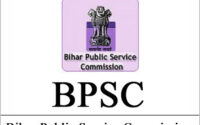SBI Junior Associates English Language Question Papers for Prelims and Mains
Directions (Q. 1 to 5) : Read each sentence to t if there is any error in it. The error, if any will be any part of the sentence. The number of that part is the answer. If there is no error the answer is (E). (Ignore errors in punctuation if any)
1. Governments and businesses must reduce (A) / its own energy use (B) / and promote conservation (C) /to their citizens and employees (D) / No error (E).
2. If the allegations (A) / made against him (B) / are found to be true (C) / he could face rigorous imprisonment (D) / No error (E).
3. Having acquired some experience (A) / she is no longer (B) / one of those who believes (C) every explanation she is given (D) / No or (E).
4. On discovering that (A) / it was a forgery (B) / he torn up the agreement (C) / he had signed (D) / No error (E).
5. With regard to implementation the (A) / details of the proposal (B) / the committee was divided (C) / in its opinion (D) / No error (E).
Directions (Q. 6 to 15) : Which of the phrases (A), (B), (C), (D) given below each sentence should the phrase printed in bold type to make the sentence grammatically correct? If the sentence is correct mark (E) i. e. ‘No correction required’ as answer.
6. Many employees are hesitate of volunteer for assignments in a foreign country because of language and cultural issues.
A. hesitated to volunteer
B. hesitant to volunteer
C. hesitating volunteer
D. hesitatingly volunteer
E. No correction required
7. Salaries in state owned enterprises today have to be in line on prevailing market rates in order to reduce turnover.
A. been on line with
B. to be aligned on
C. been in line for
D. to be in line with
E. No correction required
8. As a member of the Cabinet, Aiyar had the opportunity to observe debates and see which they were resolved.
A. about they being resolved
B. that it was resolved
C. to its resolution
D. how they were resolved
E. No correction required
9. The Board has inability to provide any proper strategy to outdo the competition.
A. not being able to provide
B. has been unable to provide
C. cannot provide for
D. is being unable to provide
E. No correction required
10. Did the court not intervened the matter many students would have been denied admission.
A. Because the court intervened in
B. Until the court had intervened
C. Had the court not intervened in
D. If the court intervened between
E. No correction required
11. Budget hotels are being set up across the country to provide travellers with accommodation at reasonable rates.
A. are to be set in
B. will be set up
C. have been setting up around
D. were set up through
E. No correction required
12. Directly the meeting commenced then the Borard called for the Chairman’s resignation.
A. No sooner had the meeting commenced than
B. As soon as the meeting commenced when
C. Hardly did the meeting commence
D. Soon after the meeting commences that
E. No correction required
13. The Director said that he did not want to see neither of the student who had failed and ordered them to leave.
A. none of the students
B. one of the student
C. each of the student
D. any of the students
E. No correction required
14. He was determined in completing the project despite opposition from the union.
A. on completing
B. to complete
C. for completion
D. about completed
E. No correction required
15. In his speech he failed to emphasize the only great reason why Government programmes have not benefited the poor.
A. greatest reason why
B. only greatest reason
C. only greatest reason for
D. great reason because
E. No correction required
Directions (Q. 16 to 20) : Read the following passage carefully and answer the questions given below it. Certain words are given in bold to help you to locate them while answering some of the question.
The income disparity in the new India is massive. 36 billionaires in India and 800 million people living on less than $2 a day. The challenge for achieving inclusive growth relates to the revival of agriculture. Farming is becoming a non-viable activity. A confluence of factors, from poor rainfall to the new availability of consumer goods which consume much of Indian families’ incomes has driven many farmers into crushing debt. The agriculture sector has many problems with a growth rate of less than 2% in the last decade. Further scope for increase in net sown area is limited. Disparity in productivity across regions and crops has persisted. Far from benefiting from the economic boom many complain that banks don’t offer the rural poor credit, forcing them to turn to greedy money-lenders, who typically charge up to 20% interest on a four-month loan. Health care and education costs have risen dramatically, while the global price of cotton has become depressed, largely due to the billions of dollars in subsidies Washington hands out to U.S. farmers.
The approach to the revival of Indian-agriculture seems to be incremental, rather than a holistic strategy. It is important to stress that growth and equity should be pursued simultaneously rather than following ‘growth first and equity next’ approach. What are the challenges for achieving 4% growth and equity in agriculture? Policy makers like the National Commission on Farmers mention cost reduction in agriculture as important to compete in a globalised world. The most important problem for the farmers is output price fluctuations. There is a big gap between producer prices and consumer prices. In order to protect farmers from national and international price volatility, a price stabilization fund is needed. The supply and demand side constraints have to be removed to raise growth. The support systems have to be tuned to improve productivity and incomes of farmers with emphasis on small and marginal farmers and dry land areas. One of the differences between the green revolution in the 1960s/70s and the present ‘second green revolution’ is that risk is higher in the latter approach as it has to concentrate more on dry-land areas. Trade liberalization has also raised the risk and uncertainty. Thus policies have to keep in mind the increasing risk in agriculture. Agriculture policies have to be gender sensitive too since the share of women is increasing. The Government is aware that the crop sector may not be able to grow at 4% per annum but horticulture and allied activities like dairying, poultry and fisheries have to grow at the rate 6% to 7% to achieve 4% growth in agriculture. Investment in irrigation and rural infrastructure is important for agricultural growth. It is known that public investment in agriculture is lower than the requirements needed for achieving 4% growth. Bharat Nirman Programme is in the right direction but the progress has to be much faster.
16. What does the author view as a challenge for achieving inclusive growth?
A. Doubling agricultural growth using an incremental approach
B. Regulating the availability of consumer goods
C. Achieving growth and equity in agriculture
D. Reducing cost of healthcare and education for the poor through privatization
E. Maintaining a steady growth rate of 2% during the next decade
17. Which of the following factors should the Government take into consideration while framing agricultural policies?
1. Allied farm activities like horticulture should receive less attention
2. Increased participation of women in agricultural sector
3. Reduced risk in agriculture owing to globalisation
A. only 1
B. Only 2
C. Both 1 & 2
D. All 1, 2 & 3
E. None of these
18. What has prevented the rural poor from benefiting from economic growth?
1. High rate of interest on bank credit
2. Exploitation by money lenders
3. Subsidies provided by the government to farmers are insufficient
A. Only 3
B. Both 1 & 2
C. Only 2
D. Both 2 & 3
E. None of these
19. Why are farmers facing crippling debt?
1. Increased expenditure on luxury items
2. Subsidies are not provided by the Indian government
3. Prices of crops like cotton have risen dramatically
A. All 1, 2 & 3
B. Only 2
C. Only 2
D. Both 1 & 2
E. None of these
20. Why is farming not considered as feasible occupation?
A. Insufficient land suitable for cultivation
B. Price stabilization fund introduced by the government
C. Superior western farming practices
D. Rapid spread of road network has destroyed agricultural land
E. None of these
Directions (Q. 21 to 340) : In the following passage there are blanks each of which has been numbered. These numbers are printed below the passage and against each five words have been suggested, one of which fills the blanks appropriately. Find out the appropriate word in each case.
Amid rumours of the government planning a crackdown on stock speculation, the Shanghai stock index ——- (21) ——- 8.8 percent on February 27th, its —— (22) ——— one day drop in a decade. —— (23) —– usual for China’s stock markets, investors in New York’s equity markets saw this and sent the Dow Jones industrial index down more than 400 points. The drop in New York’s index in turn ——– (24) —— fear in markets across Asia the following day and suddenly stock indexes across the world —— (25) —— This chain reaction plainly —— (26) —— the increasingly ——- (27) ——- place that China now occupies in the minds of global investors. Its extraordinary economic run has been the key reason for ——- (28 ) —– demand for everything from copper to cars much to the ——–(29) —— of multinational and Chinese investors alike. But while investors are right about China’s growing economic importance to the world they are still confused about how to ——– (30) —— a decline in Chinese stocks.
21. A) plunged B) fallen C) triggered D) gained E) slips
22. A) substantial B) significant C) dismal D) biggest E)peak
23. A) However B) Being C) Despite D) Because E) Though
24. A) heighten B) fuelled C) predicted D) ignore E) instill
25. A) stumble B) corrected C) tumbled D) stabilisd E) dive
26. A) reflect B) strengthened C) caused D) demonstrate E) emphasis
27. A) privileged B) prominent C) tangible D) feasible E) worthwhile
28. A) variable B) risen C) fallen D) volatile E) soaring
29. A) risk B) determent C) benefit D) impact E) indicate
30. A) interpret B) deal C) cope D) welcome E) concern


